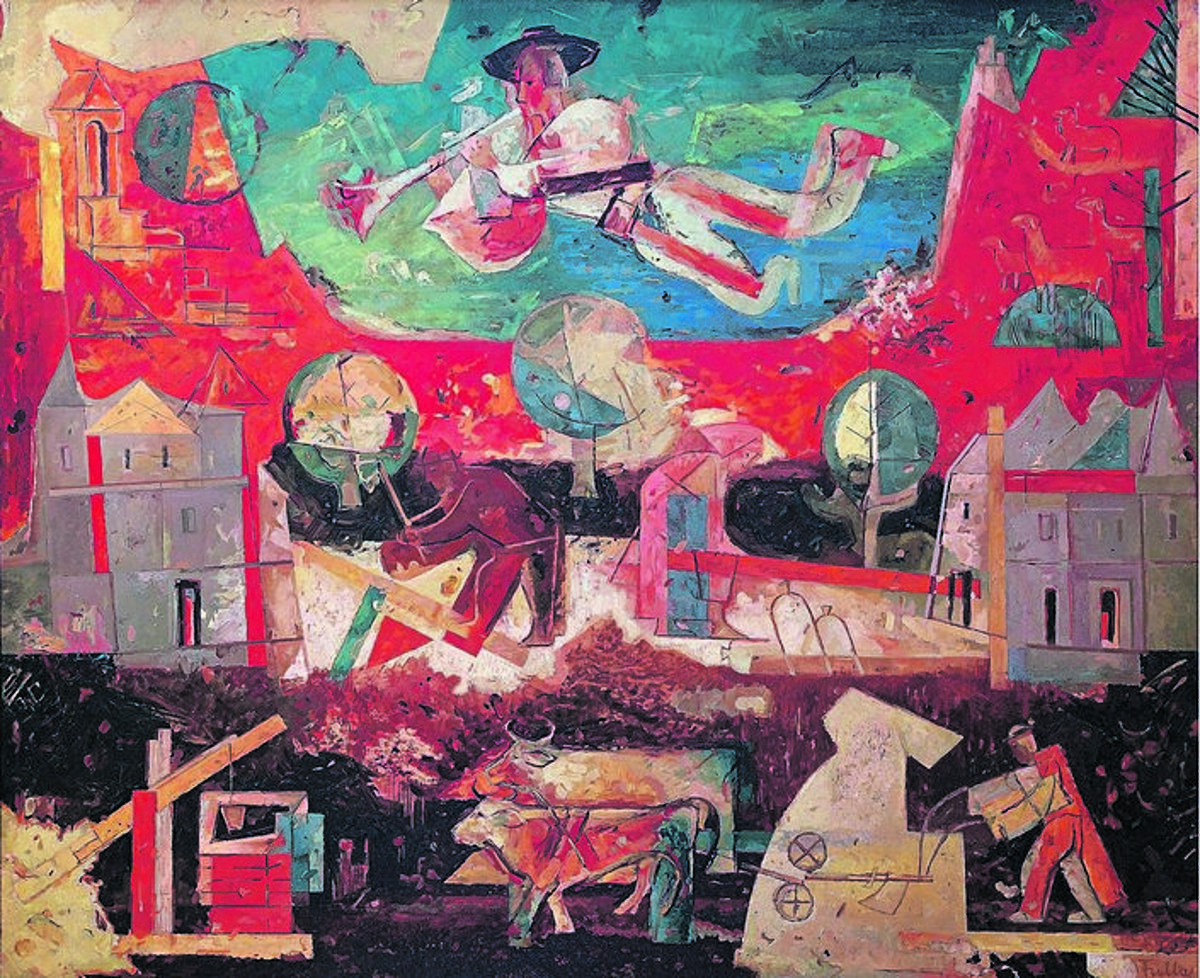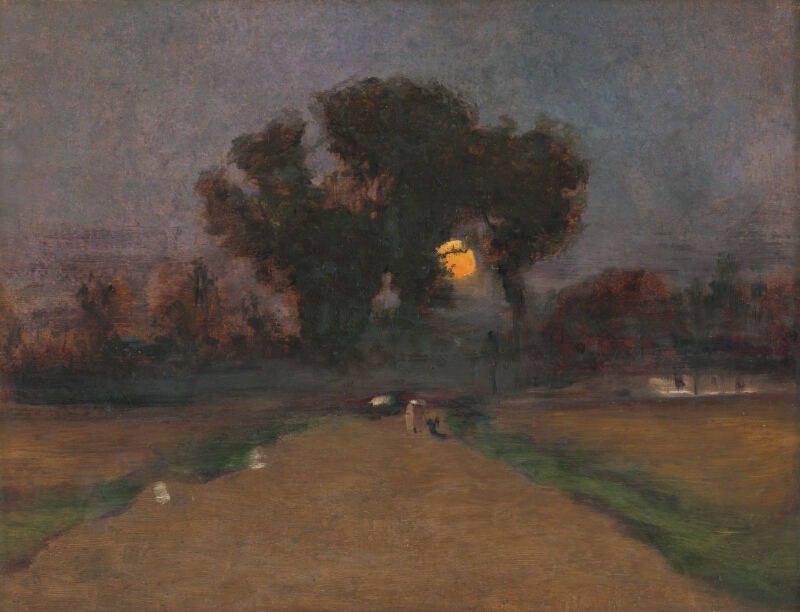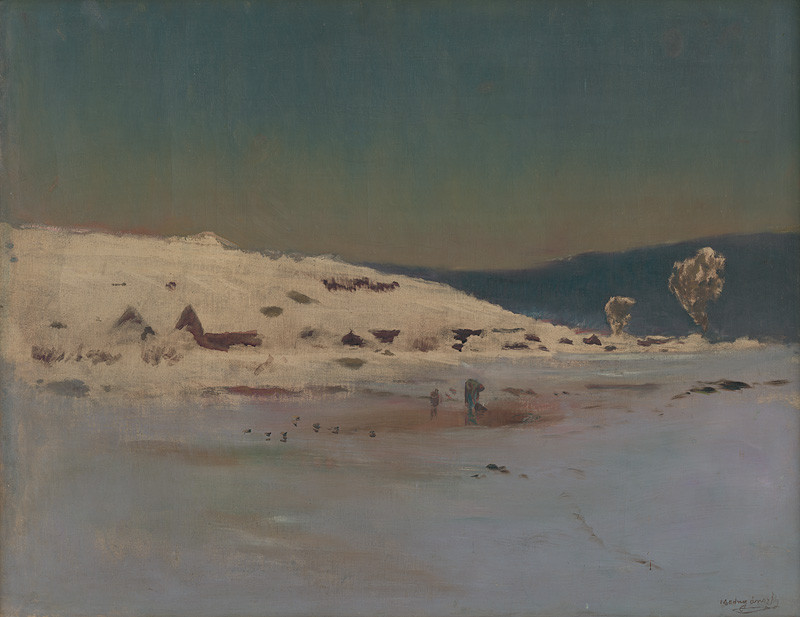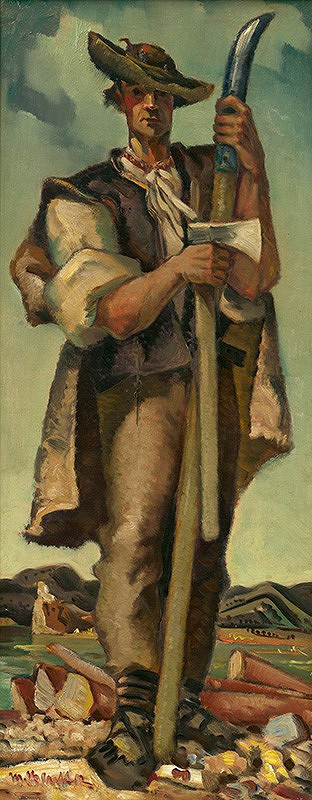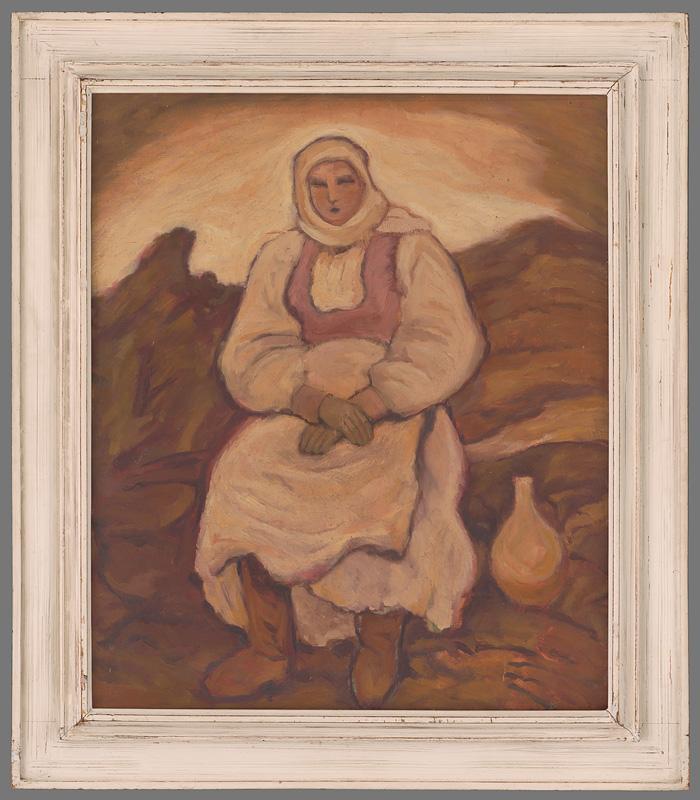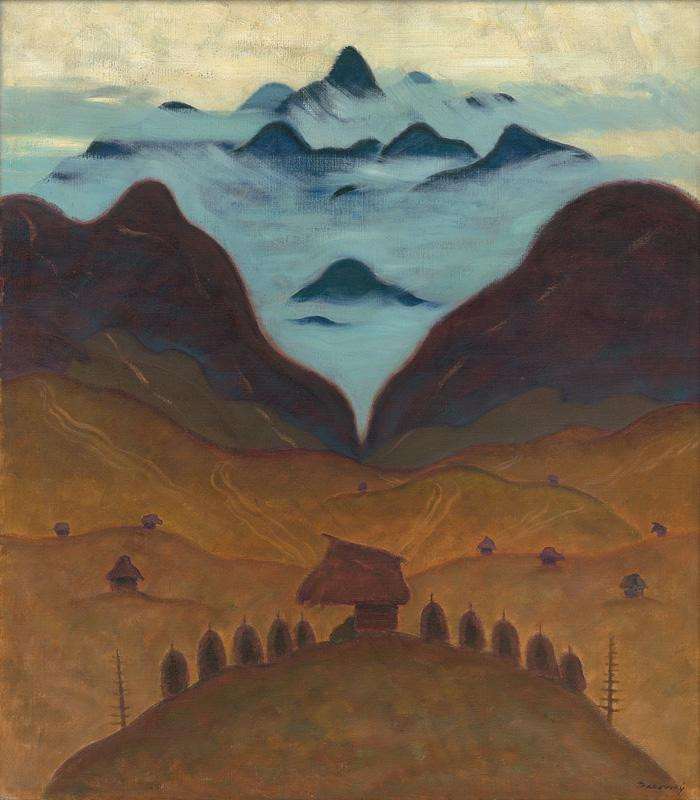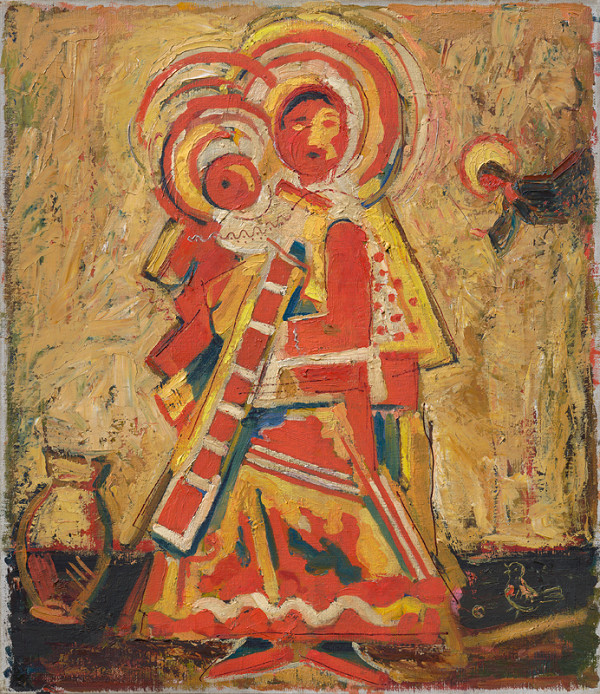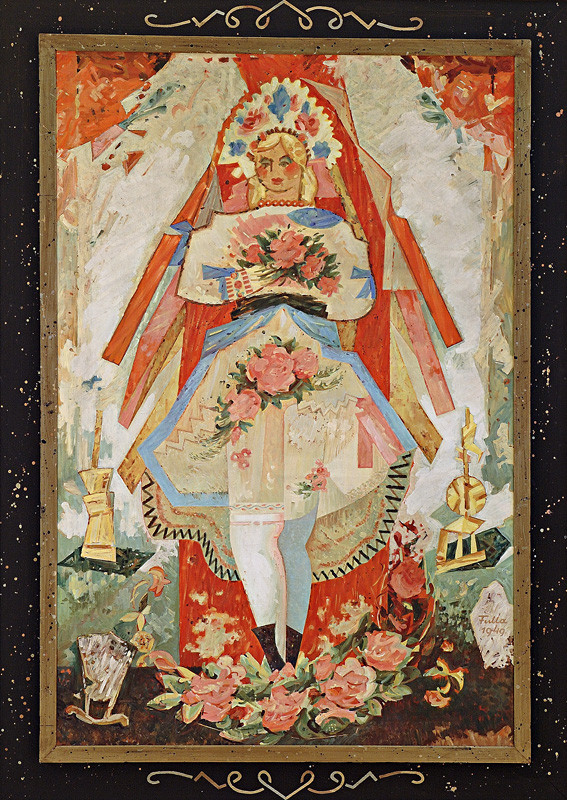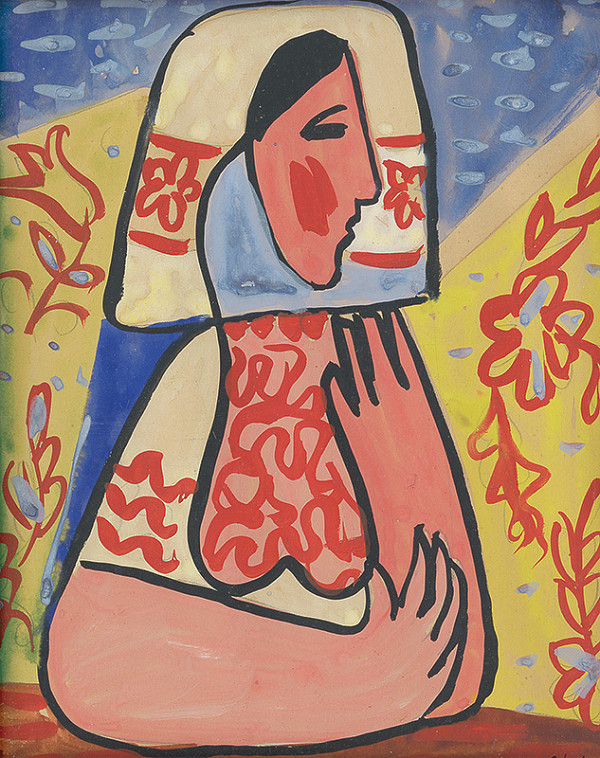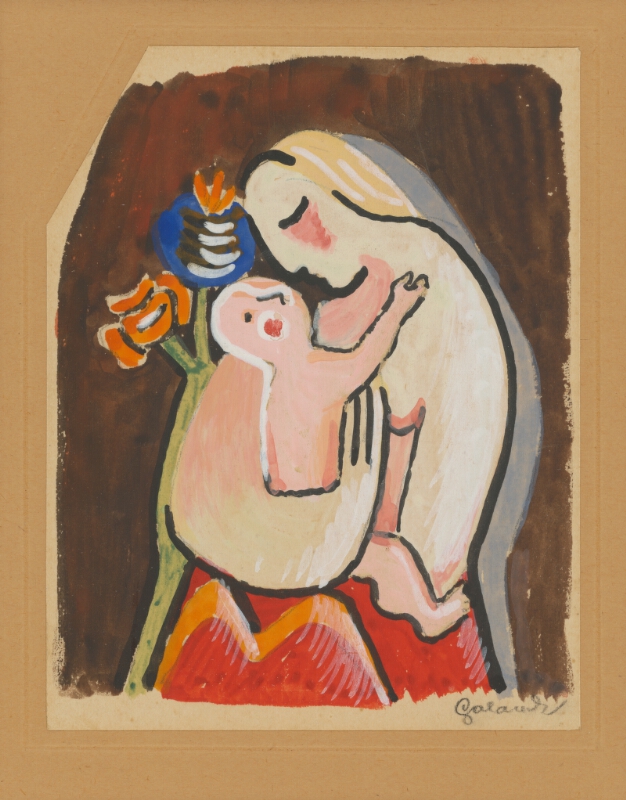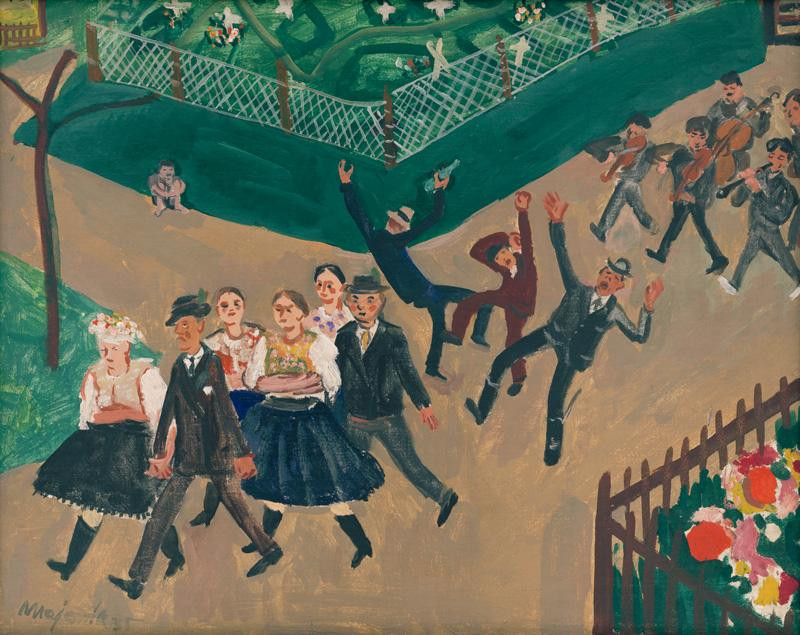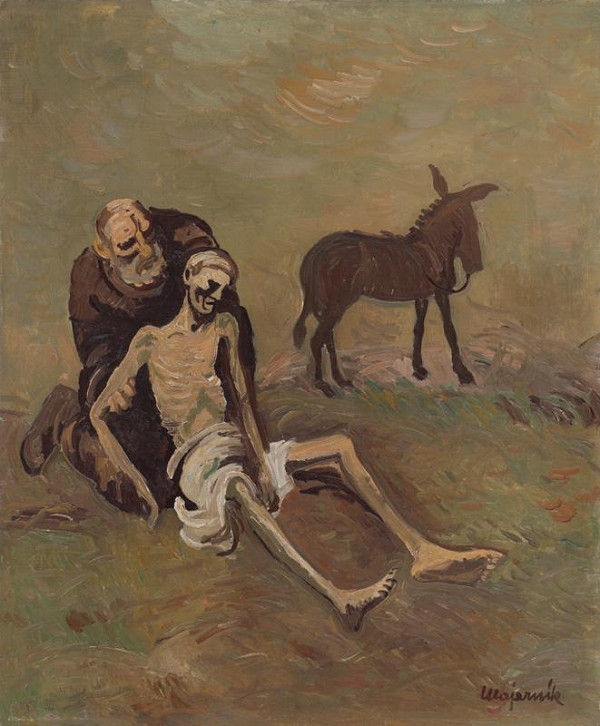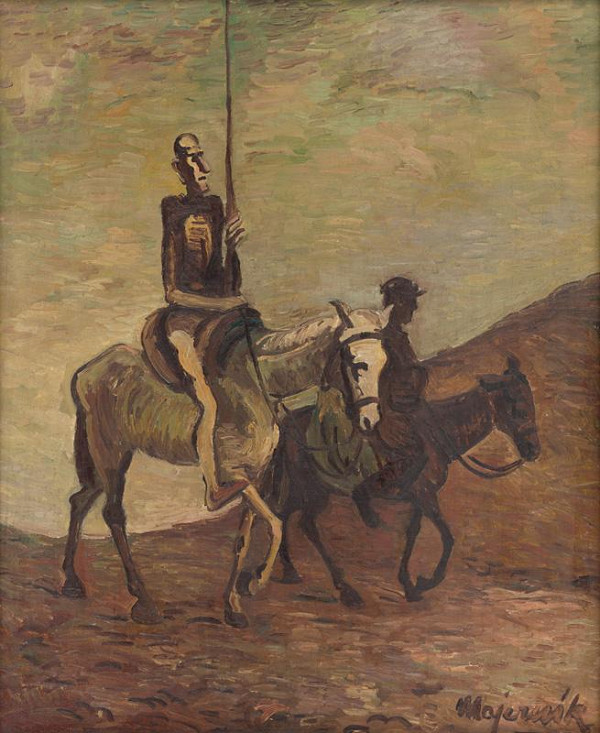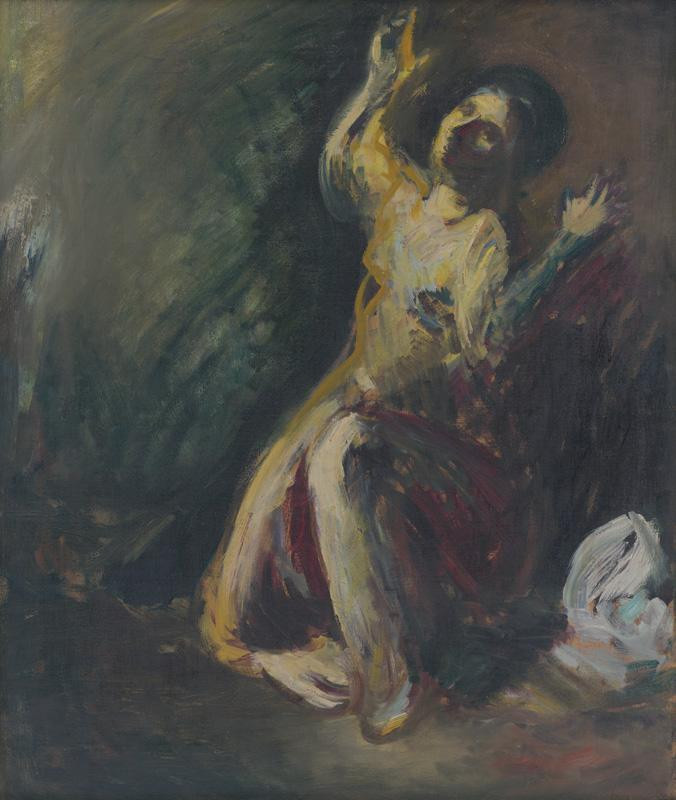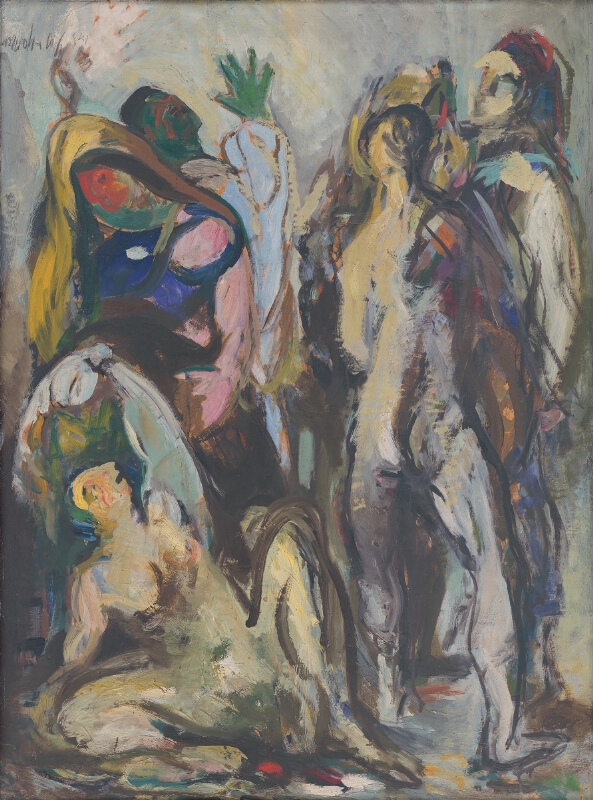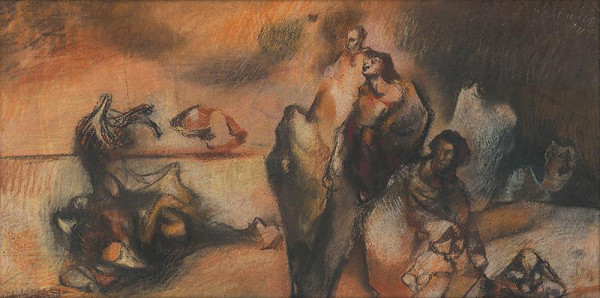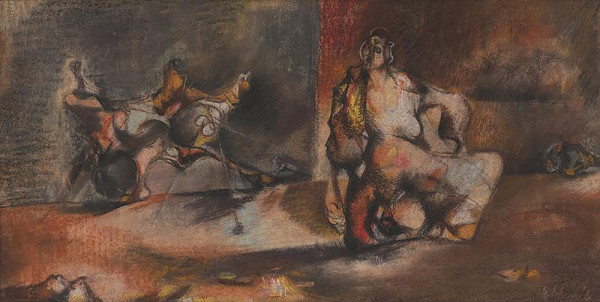The beginning of the Slovak Modern Art (1900 – 1948)
We believe that the awareness of the Slovak Modernism is not very prevailing. In this blog article of our Daisy Online Gallery we are trying to mention at lest a few its important milestones.
The overall situation
The current Slovak territory belonged up to 1918 to the Austria-Hungarian Monarchy. The Slovak part of the monarchy was lacking large urban centers, which are vital to follow and spread trendy artistic movements. Thus aspiring young artists were acquiring their formal artistic training in nearby metropolitan centers, mainly in Vienna, Budapest, Munich, Prague and to a lesser extent also in Paris.
The time period of approximately 1900-1948 was essential for establishing the Slovak Modernism. Early years are characterized by confrontation between old and new art concepts, which eventually resulted in a symbiosis of traditional subjects and modern art expressions. As Slovakia was then an agrarian country, the prevailing subjects were rural and folk themes. However, over time Slovak painters embraced also urban and social topics. Moreover, the Slovak artistic scene did not fully adopt new artistic trends, but rather was inspired by them in artworks capturing unique social and ideological aspects of the Slovak society.
Central European Luminism – the very beginning of the Slovak Modernism
At the very beginning many Slovak artists were choosing so-called a “Central European Luminism” (1900-1938) as an artistic style for their artworks. The style can be related to the French Impressionism as it is using the quality of light, although the luminist light is particularly distinct and often cold and hard. The goal is to evoke a quiet spirituality and meditative mood. Compositions are very ordered and with a deep spatial recession, which invokes a certain silence. For instance, works of Ladislav Mednyánszky, can be assigned to this artistic style.
The Slovak Myth – the romantic phase of the Slovak Modernism
The most prevailing style of the Slovak Modernism (1920’s to 1940’s) was romantically perceived painting or so called the “Slovak Myth”. It was based on archaic perception of the Slovak village and strong tradition of folk art. The style is a mix of various trends of European Modernism, mainly Cubism, Constructivism and Neoclassicism. A great representative of the style is Martin Benka with his beautiful nature sceneries of the Slovak countryside and heroic images of ordinary Slovak people. Similar motifs such as rural symbols and figures of villagers, although approached from rather a lyrical perspective and without heroic idealism, can be found in paintings of Alexander Bazovsky and Janko Alexy.
The national aspect is also present in artworks of Ludovit Fulla (received the Grand Prix at the World Exhibition held in Paris in 1937) and Mikulas Galanda. Fulla’s paintings convey a special “poetry of the image” expressed through synthesis of rational and emotional elements as well as intensive colors. On the other hand, Galanda’s visual art depicts mainly delicate female beauty and charm throughout the various stages of a woman’s life such as youth, motherhood, and mature age.
In addition to being great painters, Fulla and Galanda were active supporters of new trends in the visual art. They strongly emphasized an abstract aspect of modern art. It was in contradiction to traditional paradigm of Slovak painting, which was based on conceptual stylisation of national struggle and revival. In quite conservative Slovakia presenting the new idea of painting was considerably challenging. The two innovative artists had to deal with a lot of misunderstanding and disdain.
The Generation 1909 – true beginning of the Slovak Modernism
Another significant artistic movement was “the Generation 1909”, which appears on the Slovak art scene at the second half of 1930’s and consists of artists born around 1909. Artists grouped in the initiative focused mainly on content, and not so much on form of their artworks. They preferred motifs such as civic and social themes. During the World War II many artists of the movement expressed in their paintings vigorous rejection of Fascism and destructive power of war. The group was a cluster of individuals in every way.
One of the leading personalities of the movement was the painter Cyprian Majernik. Thanks to his short stay in Paris he discovered a metropolitan city and the lives of its people. The experience let him perceive a worshiped theme of Slovak painting – country life and ordinary people, differently compared to his predecessors. When he depicts the topic in his early years, he does it in a form of grotesque perspective, which points out to emptiness and pointlesness of traditional Slovak life. The central theme of his art turned out to be powerlessness of innocents and an opposition to Fascism. Gradually, it was his only topic as his artistic undertakings were voicing strong protests against the prison camps, death marches and other evil acts perpetrated by the Nazi régime. The figure of Don Quixote, a disguised but aknowledged self-portrait, was a recurring motif of continued resistance and hope.
Another very active member of “the Generation 1909” was the painter Jan Mudroch. He preferred figurative paintings, still lifes with flowers and often made use of metaphors and symbols. Moreover, he was the first principal of the Academy of Arts in Bratislava and a co-founder of a group that published surrealist magazines and anthologies.
One of the youngest painters belonging to “the Generation 1909” was Vincent Hloznik, who was not only a painter, but also a graphic artist, illustrator, and a sculptor. He used a disharmonic composition and liked to show an anatomy of figures with somehow deformed joints and in exaggerated form.
In conclusion:
During the first half of the 20th century the rules of classic paintings were replaced by new approaches to art making. The Slovak artists were also determined to adopt a new visual language that was both original and reflective of the changes ongoing in the Slovak society. The time period of 1900 – 1948 proved to be crucial in setting up a basis for the Slovak modern art.
Information sources:
https://profil.kultury.sk/
https://www.webumenia.sk/
Our Mission
With our online “Daisy Art Gallery” you can switch from the virtual art world to the tangible art world! You can enrich your life, awaken your imagination, express your values and attitudes as well as support and encourage young artists in their artistic endeavors.
Whatever you need, you can contact Jana at:

mobile: +49 176 246 19113
e-mail: jfabianova07@gmail.com

